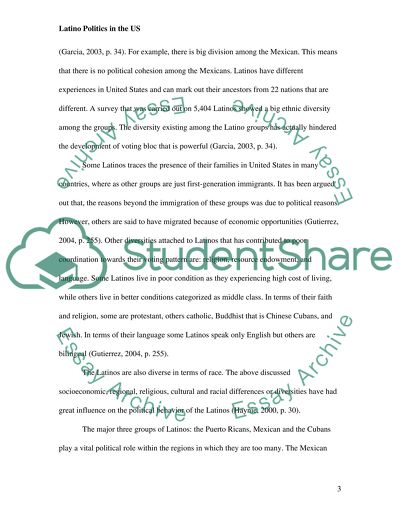Cite this document
(“*International Relations* Latino Politics in the US. (economic or Essay”, n.d.)
*International Relations* Latino Politics in the US. (economic or Essay. Retrieved from https://studentshare.org/miscellaneous/1554941-international-relations-latino-politics-in-the-us-economic-or-political-analysis
*International Relations* Latino Politics in the US. (economic or Essay. Retrieved from https://studentshare.org/miscellaneous/1554941-international-relations-latino-politics-in-the-us-economic-or-political-analysis
(*International Relations* Latino Politics in the US. (economic or Essay)
*International Relations* Latino Politics in the US. (economic or Essay. https://studentshare.org/miscellaneous/1554941-international-relations-latino-politics-in-the-us-economic-or-political-analysis.
*International Relations* Latino Politics in the US. (economic or Essay. https://studentshare.org/miscellaneous/1554941-international-relations-latino-politics-in-the-us-economic-or-political-analysis.
“*International Relations* Latino Politics in the US. (economic or Essay”, n.d. https://studentshare.org/miscellaneous/1554941-international-relations-latino-politics-in-the-us-economic-or-political-analysis.


